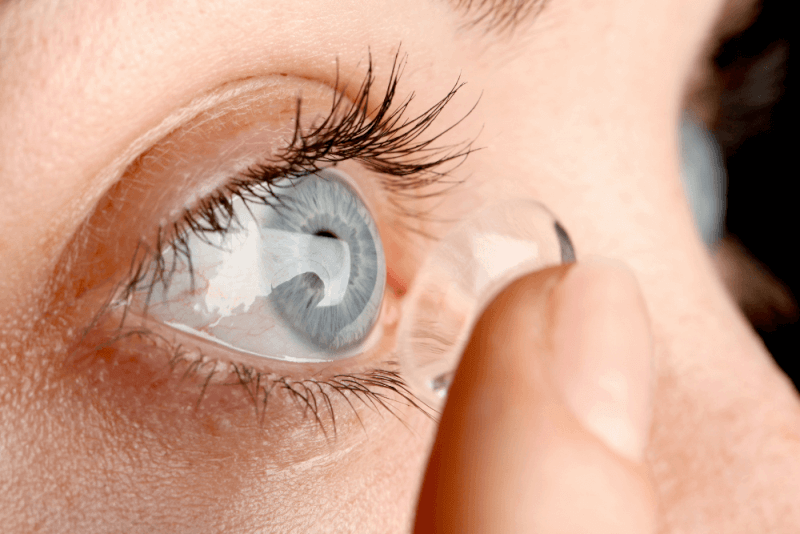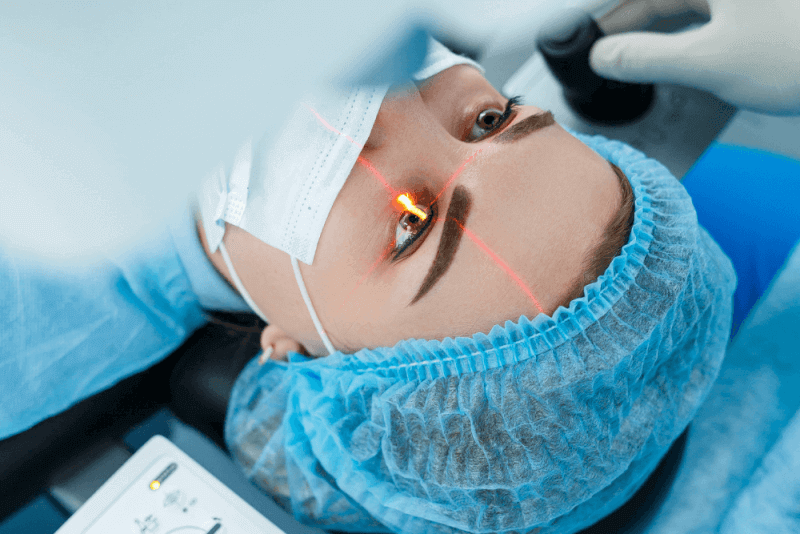What is astigmatism?
Astigmatism, one of the common refractive errors, occurs when the cornea or lens is more curved than it should be. This change leads to a blurring of vision. Lenses such as glasses or contact lenses are used to correct this defect.
In the case of astigmatism in eyes that are normally perfectly round, the eye shape is curved like the back of a spoon. This change in shape causes the light entering the eye to bend unevenly, affecting vision at all distances.
Astigmatism diagnostic criteria
Astigmatism is diagnosed by eye examination. The tests included in the eye examination include the following.
Visual acuity test
It is a test to check vision. During the eye examination, the acuity of vision is tested by asking to read letters or symbols.
Fracture test
The refraction test shows how much the light entering the eye is focused and bent.
Keratometry
It is a test that allows the corneal curvature to be measured.
Slit lamp examination
The brightness and thickness of the beam is adjusted with the microscope, which is used to knit the different layers and parts of the eye.
Causes of astigmatism
Astigmatism is often inherited. It is therefore passed on from the child's parents. In addition, the pressure of the eyelids on the cornea can also cause astigmatism. In addition, other causes that can cause astigmatism include the following.
- Eye injuries
- Complications after eye surgery
- Keratoconus
Astigmatism symptoms
The most characteristic symptom of astigmatism is blurred vision. In addition, it is difficult to see the details of objects when reading up close or from a distance. In addition, the symptoms seen in people with astigmatism include the following.
- Seeing glare and halos around lights
- Eye strain
- Squinting to see better
- Burnout
- Headache
Although young children may experience these symptoms, they may have difficulty recognizing that something is wrong with their vision. For this reason, it is necessary to consult a doctor in case of the following symptoms.
- Squinting their eyes
- Rubbing their eyes
- Frequent headaches
Astigmatism treatment methods
Corrective lenses are used to treat astigmatism. However, in cases where the degree of astigmatism is not large, this treatment is not needed. Even if the correct lenses are used, the degree of astigmatism can progress over time.
Astigmatism glasses treatment
Lenses that compensate for the irregular shape of the eye. The eyeglass lenses used allow light to be bent towards the eye.
Astigmatism laser treatment
Laser treatment improves vision. This reduces the need for glasses and lenses. In laser surgeries, laser beams are used to reshape the corneal folds. Correction of defects also improves visual defects.
The types of surgical procedures to be applied in astigmatism laser treatment include the following.
Laser-assisted in situ keratomileusis (LASIK)
In this method, a thin, hinged flap is made in the cornea. The excimer laser is then used to reshape the cornea and then the flap is repositioned.
Laser-assisted subepithelial keratectomy (LASEK)
This procedure does not involve corneal flap creation. Instead, the thin protective covering of the cornea is loosened with a special alcohol. The excimer laser is then used to change the shape of the cornea and the loosened epithelium is then repositioned.
Photorefractive keratectomy (PRK)
The difference of PRK, which is similar to LASEK, is the removal of the epithelium. In this way, the cornea grows according to its new shape. After the operation, a special lens is worn and the eye is bandaged.
Epi-laser assisted in situ keratomileusis
In this method, a blunt blade is used instead of alcohol to separate the epithelial layer. Subsequent procedures are the same as with LASIK.
Small incision lenticule extraction (SMILE)
SMILE, a new type of laser surgery, uses laser technology to create a lens-shaped piece of tissue under the surface of the cornea. The piece of tissue is then removed through a small incision.
Astigmatism contact lens treatment
Contact lenses, like glasses, help to compensate for deformities in the eye. There are also rigid lenses that allow correction of eye curvature. These lenses, which are used while sleeping at night, are called orthokeratology. After the shape of the eye is corrected, it should be used at some times to maintain the shape. The eye returns to its original state after the end of lens wear.
How does astigmatism see?
In people with astigmatism, more light enters the eye than it should. The extra light prevents the retina from focusing properly. Lack of focus also causes objects to appear blurred or wavy. Astigmatism, which causes deterioration of vision at both near and far distances, causes eye fatigue.
Degrees of astigmatism
Increasing the degree of astigmatism leads to increased visual impairment.
Astigmatism degrees between 0.50-1.00
Astigmatism between these degrees usually does not cause any problems with vision. In this way, vision is very good even without glasses.
1.00-4.00 degrees of astigmatism
In this degree range, hyperopia or myopia is usually also seen. For this reason, astigmatism glasses should be used.
Astigmatism degrees of 4.00 and above
If the degree of astigmatism is above 4, the use of glasses is mandatory. Surgical procedures are also suitable for people above this degree.
Types of astigmatism
Astigmatism is divided into different types depending on the shape change in the eye.
Corneal astigmatism
If astigmatism occurs due to the irregular shape of the cornea, it is called corneal astigmatism.
Lenticular astigmatism
It is a visual impairment due to the irregular shape of the lens in the eye.
Lenticular astigmatism
Astigmatism caused by cataract is called lenticular astigmatism.
What happens if glasses are not worn in astigmatism?
The use of glasses to correct the visual impairment caused by astigmatism does not cause astigmatism to progress or regress.
Does astigmatism progress?
Astigmatism can be both congenital and acquired. Failure to treat it properly causes the degree of astigmatism to progress. It also causes amblyopia, also called lazy eye. Also, behaviors such as reading a book in dim light or watching television closely do not cause astigmatism to progress.







